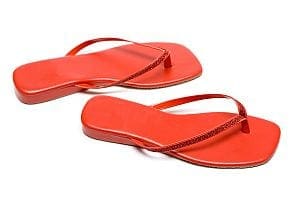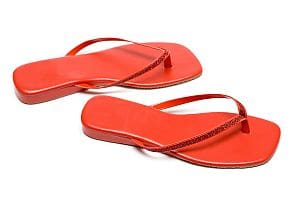statFor some women, it's about making an elegantement at special events or being a couple…

Focus on Footwear: The Trouble with Flip-Flops
 Ask just about any chiropractor which type of footwear is the worst for your feet and back, and you’ll likely hear about two culprits: high heels and flip-flops. While high heels spell trouble for women, flip-flops are worn by men, women, teenagers, and children, making them a more ubiquitous health hazard than any other commonly worn type of footwear. So what exactly is the trouble with flip-flops? Why do chiropractors advise so strongly against wearing them? In a nutshell, flip-flops not only lack a protective shell or any sort of support, but they force wearers to walk unnaturally, causing numerous foot, leg, and back problems.
Ask just about any chiropractor which type of footwear is the worst for your feet and back, and you’ll likely hear about two culprits: high heels and flip-flops. While high heels spell trouble for women, flip-flops are worn by men, women, teenagers, and children, making them a more ubiquitous health hazard than any other commonly worn type of footwear. So what exactly is the trouble with flip-flops? Why do chiropractors advise so strongly against wearing them? In a nutshell, flip-flops not only lack a protective shell or any sort of support, but they force wearers to walk unnaturally, causing numerous foot, leg, and back problems.
Shoes are designed to perform two basic functions. One function is to offer shock absorption; the other is to provide a solid, stable surface that your foot can push off from. Flip-flops, however, provide neither shock absorption nor stability. They are essentially just covers for the bottoms of your feet.
Flip-flop manufacturers have tried to address the issues of shock absorption and stability, with minimal success. A few of the more pricey brands offer some arch support, and some have more cushioning—but no flip-flops can compare to sneakers in terms of support and shock absorption. If your footwear cannot perform its two basic functions, you could find yourself in pain, not only in your foot but up your entire leg and into the knee, hip, and back.
Without a suitable arch or appropriate shock absorption, you are forced to walk differently, which can negatively affect the ligaments, bones, and muscles in the foot by making them work harder than they are used to. Overuse can even result in stress fractures in the bones of the feet.
Flip-flop wearers must walk abnormally in order to keep their flip-flops on. A study conducted by Auburn University found that the average flip-flop wearer takes shorter steps than those who wear other footwear. The study also found that flip-flop wearers hit their heels to the ground with less vertical force, which throws off a person’s natural gait and can cause pain and other issues in the feet, ankle, legs, hips, and back.
All flip-flops come with a small strip of material that the toes must grip in order to keep the footwear in place. This repetitive gripping causes muscle overuse and can result in tendonitis, a painful condition wherein tendons become inflamed. Regular use of flip-flops can also cause or exacerbate bunions and hammer toe. Other flip-flop related maladies include plantar fasciitis, splinters, blisters, and burns due to flip-flops’ lack of protection.
Lastly, flip-flops are a breeding ground for bacteria—sometimes dangerous types. In fact, a 2009 study from the University of Miami found that even just one pair of flip-flops can contain over 18,000 bacteria, including Staphylococcus and bacteria from fecal matter.
If you feel you must wear flip-flops, consider asking your chiropractor for recommendations on which brands to look at. Additionally, you should wear them sporadically and avoid wearing them on any days on which you will be doing a lot of walking. There are other sandals that are better for your feet, so consider them as an alternative to flip-flops.




